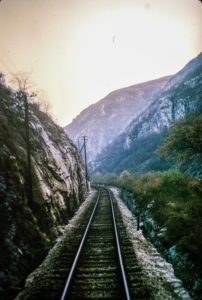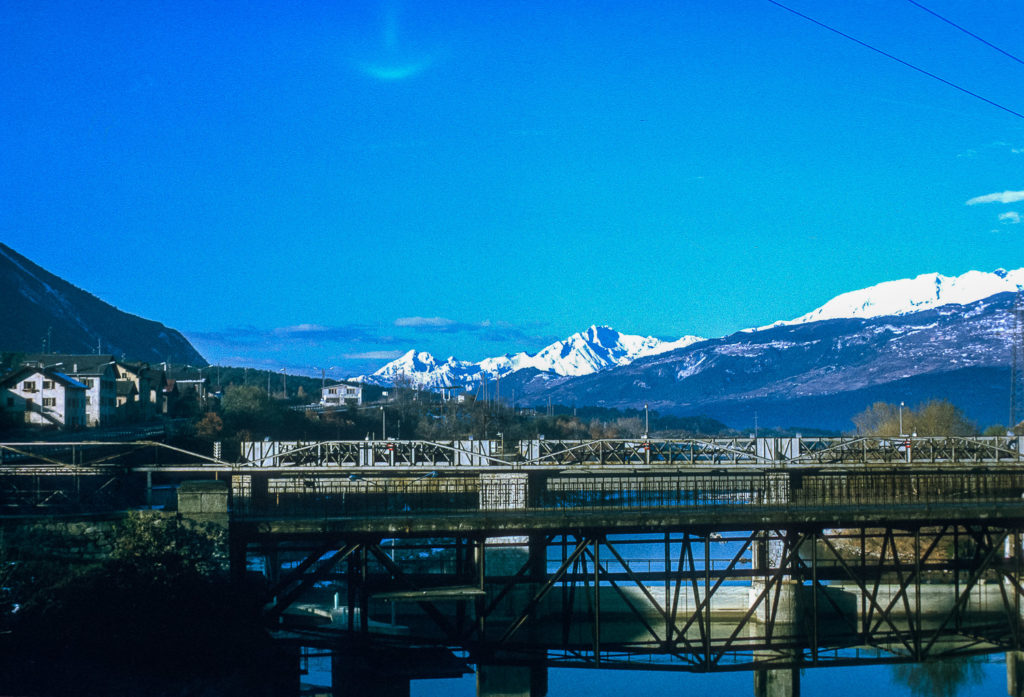
The Orient Express: November 1974
It IS murder on the Orient Express.
That was one of my favourite lines from 50 years in journalism. I had just reached Istanbul after a three day journey on the Orient Express from Paris. And I had writer’s block.

The journey was certainly not the romantic adventure of yesteryear. In fact it was hell. The cramped rail coaches were hot, steamy and uncomfortable. Then the line came to me and the story flowed from there.
I was working on the Daily Mail in London’s Fleet Street and was assigned to travel on the famous train for a feature to coincide with the opening of the Agatha Christie film, Murder on the Orient Express, later that month. It was November 1974.
I arrived in Paris smartly dressed for a train used to seeing king’s messengers, foreign diplomats and business magnates on board.
It turned out it was used by more humble commuters to shunt to and from their native lands with less portentous luggage than once filled the racks. My suit was never to be worn again on that journey.
No train in the history of the world has evoked so many dramas, so many sinister and thrilling escapes.
In 1974, the law in the six countries we travelled through was on the lookout for international smugglers, border hoppers and small time thieves – and Agatha Christie’s Hercule Poirot would have had stellar cast from which to find a whodunit victim.
 The legendary train began its 2,000 mile trek across Europe from Paris to Istanbul 91 years before my journey as travel opportunities began to widen around the globe. However, by 1974 the glamorous image of the romantic sounding express belied the ordinariness of the journey it had become.
The legendary train began its 2,000 mile trek across Europe from Paris to Istanbul 91 years before my journey as travel opportunities began to widen around the globe. However, by 1974 the glamorous image of the romantic sounding express belied the ordinariness of the journey it had become.
We left the Gare Du Nord in Paris late on a Saturday night and woke up listening to the clickety-clack as we made our way across Switzerland to Venice and on to Belgrade, where it was snowing. We were truly behind the Iron Curtain and it was grim. Grim towns, grim scenery under slate grey clouds, with grim looking people.
At one point we slowed down to pass the wreck of a previous train which had gone off the rails killing several passengers.
Jet-age demands demoted it to just another express – and not a very fast one at that. The train stopped frequently at tiny villages and wayside halts to pick up locals, sometimes with their farm animals in tow.
Even the toilet was a hole in the floor. The sleeping arrangements primitive at best and most passengers wreaked of sweat.
The route, and standards of comfort, had changed since galloping gourmets could sample exclusive cuisine between the borders.
In 1974, travellers needed a pre-bought picnic – the buffet car was non-existent.
Platform pedlars had hungry passengers as easy prey. It cost a few cents for a hard boiled egg and hunk of dry, stale bread. Twenty-five cents for a bottle of soda and 50 cents for a bar of chocolate. And as the train was almost always running late, you had to make any trip onto the platform very quick indeed as you never knew when the train would pull out. On many occasions I saw passengers flying through the air to jump on the departing train.
M. Poirot summed up the journey back then: “All around us are people, of all classes, of all nationalities, and of all ages. For three days these people, strangers to one another, are brought together.
“They sleep and eat under one roof, they cannot get away from each other. At the end they go their separate ways, never perhaps, to see each other again.”
In 1977, the Orient Express stopped travelling to Istanbul and by 2009 the Orient Express ceased to operate and the route disappeared from European timetables.

But recently a private-venture ensured that the train is running again and is back to how it appeared in the glory years. It even uses carriages from the 1920s and 1930s.The name is once again synonymous with luxury travel. And, of course, the price has escalated accordingly.


